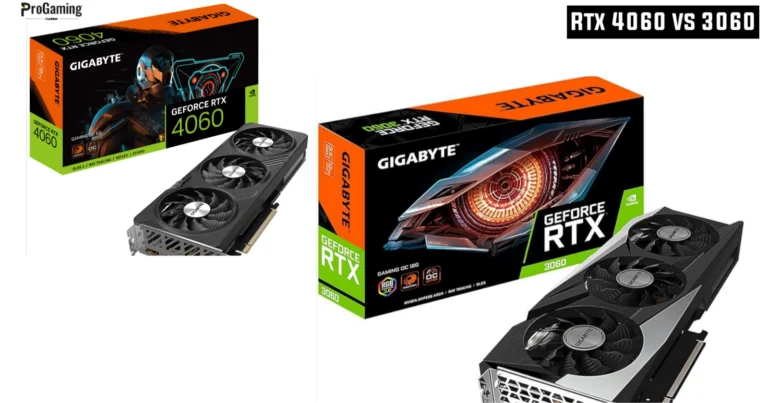RTX 4060 vs 4070: A Comprehensive Review for Gamers and PC Enthusiasts
Choosing the right graphics card is essential for gamers and PC enthusiasts who want to get the most out of their systems. With the launch of Nvidia’s latest graphics cards, the RTX 4060 and RTX 4070, consumers are faced with a choice that could significantly impact their gaming experience and productivity. In this article, we will delve deep into a detailed comparison between the RTX 4060 vs 4070, analyzing their specifications, performance, pricing, and overall suitability for different types of users.
Introduction to Nvidia’s RTX 40 Series
Nvidia’s RTX 40 series, based on the Ada Lovelace architecture, has brought several improvements over the previous RTX 30 series. The RTX 4060 and RTX 4070 are two of the most discussed GPUs in this lineup, offering distinct features and performance levels that cater to different segments of the market. While both cards are designed to provide excellent gaming and computing experiences, their differences can make one more suitable than the other depending on specific needs.
RTX 4060 vs 4070: Specifications Breakdown
Understanding the core specifications of both graphics cards is crucial for making an informed decision. Here’s a side-by-side comparison of the RTX 4060 vs 4070:
| Specification | RTX 4060 | RTX 4070 |
|---|---|---|
| CUDA Cores | 3584 | 5888 |
| Base Clock | 1830 MHz | 1920 MHz |
| Boost Clock | 2400 MHz | 2475 MHz |
| VRAM | 8GB GDDR6 | 12GB GDDR6X |
| Memory Interface | 128-bit | 192-bit |
| TDP | 115W | 200W |
| Price | $299 | $599 |
The specifications reveal that the RTX 4070 is a more powerful card on paper, with a higher CUDA core count, faster clock speeds, and more memory bandwidth. The RTX 4060, however, is significantly more affordable and has a lower power consumption, making it an attractive option for budget-conscious gamers.
Performance Comparison: RTX 4060 vs 4070
1. Gaming Performance
When it comes to gaming, the performance of a graphics card is measured by its ability to render graphics at high resolutions and frame rates. In this context, both the RTX 4060 and RTX 4070 have their strengths.
- RTX 4060: This card is geared more towards gamers who play at 1080p or 1440p resolutions. It performs admirably in these settings, handling popular titles such as Fortnite, Apex Legends, and Call of Duty: Warzone at high settings with frame rates consistently above 60 FPS. However, when pushed to 4K resolutions, the RTX 4060 starts to struggle, particularly in demanding AAA titles.
- RTX 4070: The RTX 4070, with its higher CUDA core count and memory bandwidth, is better suited for gaming at 1440p and even 4K. It can handle most AAA titles at ultra settings, providing smooth frame rates above 60 FPS. Games like Cyberpunk 2077, Horizon Zero Dawn, and Red Dead Redemption 2 run flawlessly at 1440p and still deliver playable frame rates at 4K with DLSS enabled.
2. Ray Tracing and DLSS Performance
Both the RTX 4060 and RTX 4070 support Nvidia’s ray tracing technology and DLSS (Deep Learning Super Sampling). These technologies enhance the visual fidelity of games by simulating realistic lighting and reflections and by using AI to upscale lower-resolution images.
- RTX 4060: The RTX 4060 can handle ray tracing at 1080p and 1440p with reasonable efficiency. However, in more graphically intensive scenarios, it may require DLSS to maintain playable frame rates. This makes the RTX 4060 less ideal for users who want the full ray-tracing experience at higher resolutions.
- RTX 4070: Thanks to its superior processing power and additional VRAM, the RTX 4070 excels in ray tracing. It can maintain higher frame rates with ray tracing enabled at 1440p and can even deliver a decent 4K experience when DLSS is used. Games like Control and Cyberpunk 2077 benefit greatly from the RTX 4070’s capabilities, making it the better choice for gamers who want the best visuals without compromising on performance.
3. Productivity and Content Creation
Beyond gaming, many users rely on their GPUs for tasks like video editing, 3D rendering, and AI-based applications. The RTX 4060 and RTX 4070 also cater to these needs, but their effectiveness varies.
- RTX 4060: This card is sufficient for light to moderate content creation tasks. It can handle video editing and some 3D rendering but may show its limitations with more demanding workloads or higher resolutions.
- RTX 4070: With its higher CUDA core count and faster memory, the RTX 4070 is better suited for professional workloads. It significantly reduces rendering times in applications like Blender and Adobe Premiere Pro and can handle complex tasks such as 4K video editing and high-resolution texture work more efficiently.
Pros and Cons: RTX 4060 vs 4070
RTX 4060: Pros and Cons
Pros:
- Affordable price point makes it accessible for budget gamers.
- Lower power consumption (115W), which is beneficial for users with smaller power supplies or those who want to save on electricity.
- Solid 1080p and 1440p performance, suitable for most modern games at medium to high settings.
- Compact size and thermal efficiency make it ideal for small form factor builds.
Cons:
- Limited VRAM (8GB) can be a bottleneck for future AAA titles and high-resolution textures.
- Struggles with 4K gaming and intensive ray tracing scenarios.
- Not as future-proof as the RTX 4070, particularly for gamers looking to play upcoming titles at the highest settings.
RTX 4070: Pros and Cons
Pros:
- Excellent 1440p and 4K gaming performance with high settings.
- Superior ray tracing and DLSS performance, providing enhanced visual fidelity.
- Higher CUDA core count and faster memory, making it ideal for both gaming and professional workloads.
- Future-proof with 12GB of GDDR6X VRAM, accommodating the needs of upcoming games and applications.
Cons:
- Higher price point ($599), which may be a stretch for budget-conscious buyers.
- Higher power consumption (200W), requiring a more robust power supply.
- Larger size and cooling requirements may not be suitable for all builds.
‘
Conclusion: Which Graphics Card Should You Choose?
When deciding between the RTX 4060 vs 4070, it ultimately comes down to your specific needs and budget.
- For Budget Gamers and 1080p Enthusiasts: The RTX 4060 is an excellent choice. It provides solid performance at an affordable price and is perfect for gamers who don’t need the extra power for 4K gaming or intensive ray tracing. It’s also a great option for those building a compact PC or working with power constraints.
- For High-Resolution Gamers and Content Creators: The RTX 4070 stands out as the superior option. Its ability to handle 1440p and 4K gaming, along with its advanced ray tracing and DLSS capabilities, make it the go-to choice for gamers who want the best visual experience. Additionally, its higher CUDA core count and VRAM make it ideal for content creators who need more power for video editing, 3D rendering, and other professional tasks.
Final Thoughts
In the battle of RTX 4060 vs 4070, both cards have their distinct advantages and cater to different market segments. The RTX 4060 offers affordability and efficiency, while the RTX 4070 provides power and versatility. By understanding your specific requirements, whether gaming or professional, you can make an informed choice that will offer the best performance and value for your investment.
Keyword Utilization Note: Throughout this article, we have emphasized the comparison between the RTX 4060 vs 4070, highlighting their strengths, weaknesses, and ideal use cases to help you decide which graphics card is the best fit for your needs. Whether you are building a new gaming rig or upgrading an existing setup, understanding these differences is key to maximizing both your performance and budget




